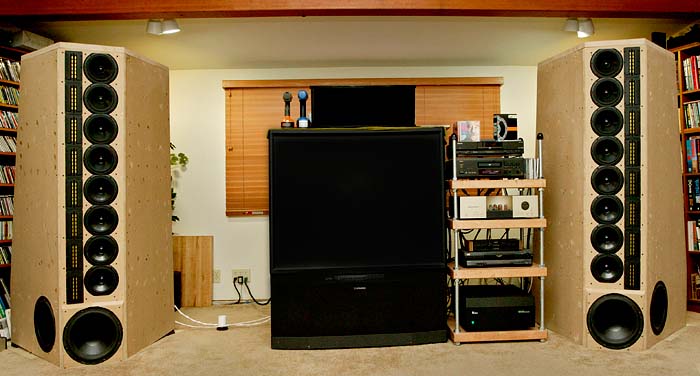 |
Audio Asylum Thread Printer Get a view of an entire thread on one page |
For Sale Ads |
 |
Audio Asylum Thread Printer Get a view of an entire thread on one page |
For Sale Ads |
192.206.119.3
Do you use any kind of protection caps on your tweeters and/or compression drivers when multiamping?
I don't want to get into the debate of the benefits/costs of multiamping and using active or passive line level crossovers vs single amp passive xo. Just want opinions on how do you protect your drivers from lower frequencies if at all.
Even if your amps get only the filtered frequencies there's alway the possibility of amplifier residual hum (more important when using DHT's), turn on/off thumps, etc.
Thanks
Follow Ups:
It's usually not a problem with low-power tube amps. The transformer prevents DC (the real catastrophic danger). Presently I'm using a 1.5W amp on compression drivers wired in series. The maximum power they could experience, at any frequency, is 0.75W. I was more concerned when using DC-coupled SS amps as a powersupply oddity could give them a full rail of DC (25V). The woofers I don't worry about so much, although I might if they were expensive. They have turn-on thumps etc but they could probably take 100+ watts easy and they are wired in series too.
...and use no cap on the tweeters. Haven't damaged a driver since I've been triamping.

-------------------------------------------------------
Tin-eared audiofool and obsessed landscape fotografer.
http://community.webshots.com/user/jeffreybehr
I have become a believer that reactive elements between speaker and amp ruin the naturalness of the presentation - I have figured that replacing the diaphragms on the compression drivers is a small price to pay for the gains in clarity and tone .
In two years I have not blown one yet
I strictly adhere to the order source on first then preamp then power amp and turn of in reverse order.
I feel it's an added safety measure. Lots of things can happen to take out an unprotected tweeter. If the amp is solid state, it can pass DC in fault conditions. Also turn-on/turn-off thumps can damage a tweeter or compression driver.
Another possible scenereo is if the input to your HF amp had an open ground, which could result in damaging 60Hz hum being sent to the HF speaker.
It is important to select a good quality capacitor. I like Solen for this application, although I'm sure there is better available. Have also had good results with motor starting oil types.
Al
In my biamp setup, the tweeter is already protected by limited lowpass output transformer (-3 dB at 200 Hz).
A cap in series with tweeter adds distortion. IMO, eliminating the tweeter cap is the greatest benefit of bi-amping.
The tweeter cap is indeed very critical! I replaced the Mundorf silver/gold in my tweeter XO (Omega DUOs) with Teflon V-Cap. The difference is astounding and the v-cap shows how much music get lost in lesser caps like the Mundorfs.
Of course the best cap is no cap at all.
Duomike
I have bi-amped for about 35 years now, and have never used a protection cap. I used a 70 watt SS amp for about half that time, and various tube amps since (for the mid/highs), and I never had a problem. I still use SS for the bass. With a tube amp, the output transformer will not allow DC to pass to the midrange driver, so it isnt required with a tube amp anyway. I have seen an istance where an output transistor failed on a SS amp, and applied the full rail voltage to the output, which fried a woofer in that system. If you use SS for your mid/tweeter amp, a good polypropylene cap is cheaper than a new voice coil assy. Set it for 1 octave lower than the crossover point (for 500Hz, use about an 80uF cap, which is -3db at 350, with an 8 ohm load). Scale for your crossover frequency.
| FAQ |
Post a Message! |
Forgot Password? |
|
||||||||||||||
|
||||||||||||||
This post is made possible by the generous support of people like you and our sponsors: